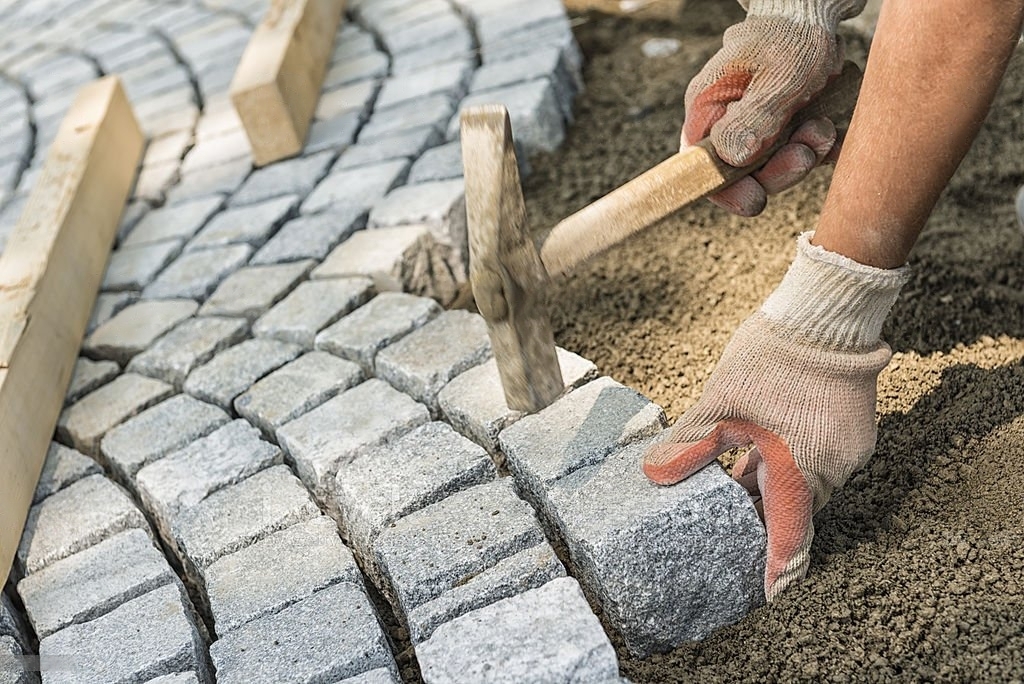Building a patio over grass can seem daunting, but with easy stone paver patio options, it can be a simple DIY project. One of the best ways to achieve this is by using interlocking patio pavers. These pavers are specifically designed to interlock, making them easy to install without any special tools or skills.
First, clear the area of grass and weeds. Level the ground and lay down a weed barrier fabric. Next, start placing the pavers on the fabric, starting at one corner and working your way out. Interlock each paver as you go to ensure they stay in place. Add more layers of pavers until you reach the desired height.
You can also add sand between the pavers to help keep them in place and create a smooth surface. Alternatively, you can use gravel or other filler material to add some texture to your patio. With easy DIY patio paver ideas, you can add some personality to your backyard without breaking the bank.
Overall, building a patio over grass can be a fun and easy DIY project. By using interlocking patio pavers, you can create a beautiful and functional outdoor space that you and your family can enjoy for years to come.
Why Should I Choose Concrete Pavers?
When it comes to creating a beautiful and functional outdoor space, choosing the right material for your patio or walkway is crucial. Concrete pavers offer a range of benefits that make them a great choice for any outdoor project.
Firstly, concrete pavers are incredibly durable and can withstand heavy traffic, making them ideal for high-traffic areas like driveways and walkways. They’re also resistant to weather damage, so you won’t have to worry about them cracking or fading over time.
Secondly, concrete pavers come in a wide range of styles, colors, and shapes, making them versatile enough to suit any design aesthetic. Whether you’re looking for a classic, traditional look or something more modern and sleek, there’s a concrete paver option for you.
Thirdly, concrete pavers are easy to install, especially if you opt for easy DIY patio paver ideas. You can easily create an easy stone paver patio by following a few simple steps, saving you time and money compared to other, more complicated paving options.
What’s So Bad About Standing Water On A Patio?
Standing water on a patio can cause various issues that may affect its appearance and functionality. An easy stone paver patio is an attractive addition to any outdoor space. However, improper drainage can lead to standing water on the surface, which can cause structural damage over time.
One of the main issues with standing water on a patio is that it can create a slip hazard, especially when the surface is wet. Additionally, stagnant water can become a breeding ground for mosquitoes and other insects, which can be a nuisance for anyone using the space.
Another problem with standing water is that it can cause the patio pavers to shift or settle unevenly over time, leading to an unattractive and potentially unsafe surface. This can also lead to additional maintenance costs in the long run.
To avoid these issues, it’s important to ensure proper drainage when installing an easy DIY patio paver. This can be achieved through various techniques, such as sloping the surface away from the house or installing a drainage system beneath the patio.
In conclusion, standing water on a patio can lead to several problems, including slip hazards, insect infestations, and structural damage. To prevent these issues, it’s crucial to install an easy stone paver patio with proper drainage to ensure a safe and functional outdoor space.
How To Cool An Outdoor Patio?
If you want to enjoy your outdoor patio during the hot summer months, it’s essential to keep it cool and comfortable. One of the best ways to do this is by using shade and water features. You can also create a relaxing and inviting atmosphere by adding some plants and seating areas.
An easy stone paver patio is an excellent option for keeping your patio cool. These patios are made from natural materials, which absorb less heat than concrete. Additionally, they provide a stable surface for outdoor furniture, making it easy to create a comfortable seating area.
When it comes to easy DIY patio paver ideas, there are many options to choose from. You can create a simple square or rectangular patio using interlocking pavers, or you can get creative and design a unique pattern or shape that complements your outdoor space.
To keep your patio cool, consider adding some shade elements, such as an umbrella or pergola. These features provide relief from the sun’s rays and make your patio a comfortable place to relax. You can also add a water feature, such as a fountain or small pond, to create a soothing atmosphere.
Don’t forget to add some plants and seating areas to your patio. Plants provide shade and help to cool the air around them, while seating areas provide a comfortable place to relax and enjoy your outdoor space. With these tips, you can create a cool and inviting patio that you’ll love spending time in.





